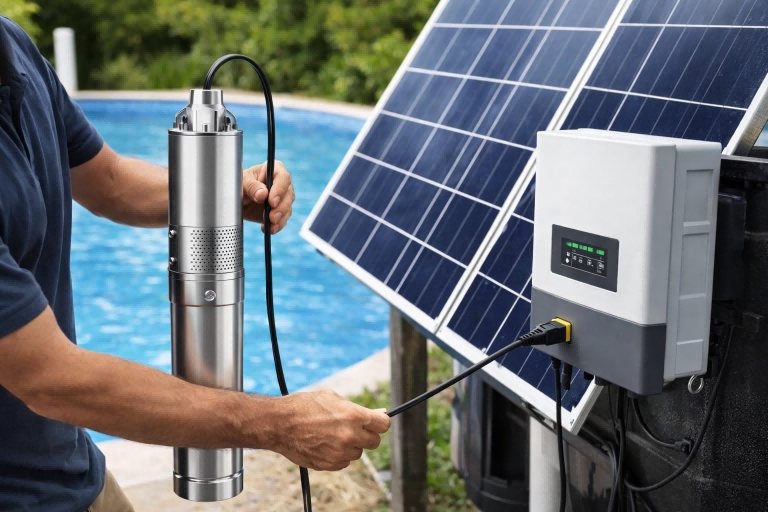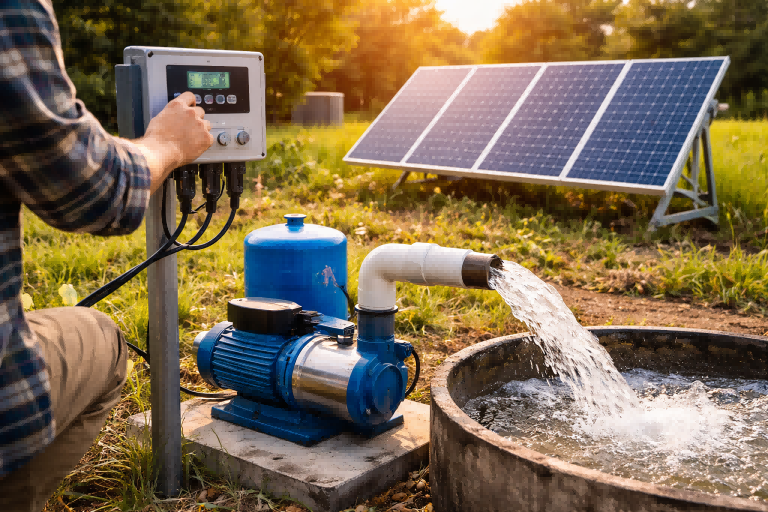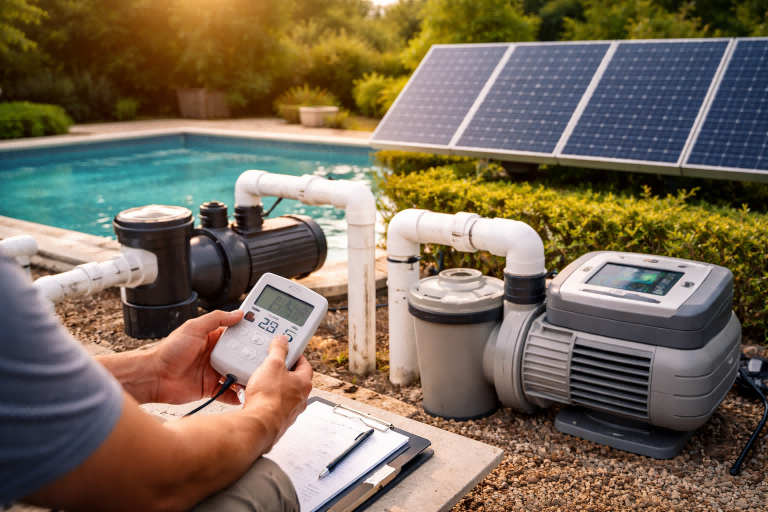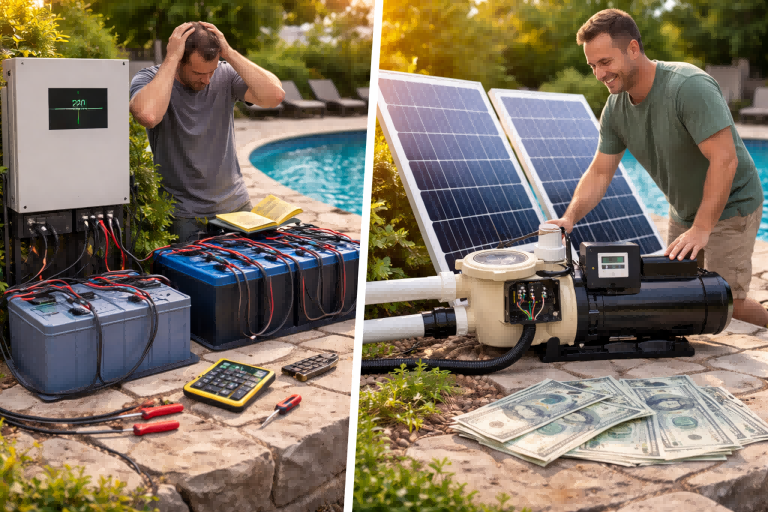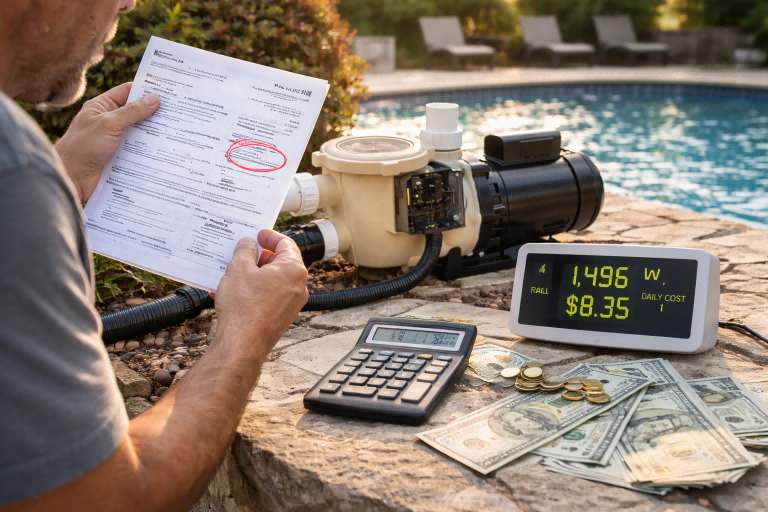Struggling with poor water flow?
Your pump's outlet might be the hidden bottleneck.
Discover how this key component ensures optimal performance and prevents system failure.
A water pump outlet, also known as the discharge port, is the connection point where pressurized water exits the pump. It directs the flow into the piping system. Choosing the correct type and size is critical for the efficiency and longevity of your entire water system.
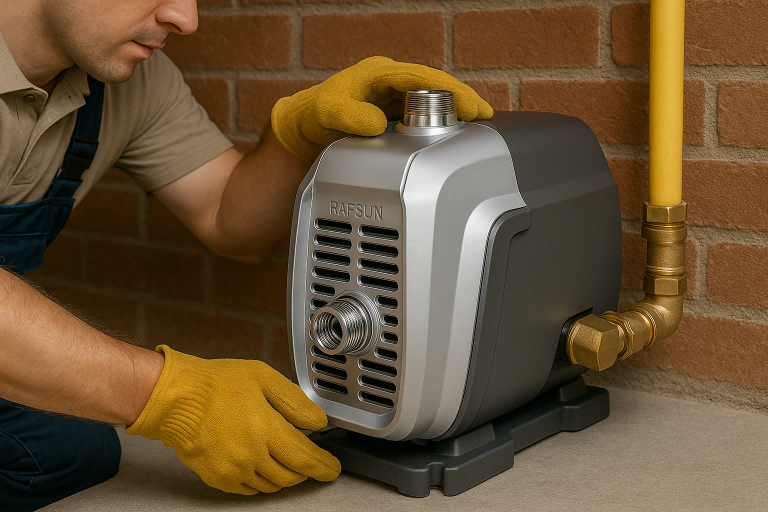
Understanding this single component is a crucial step.
It helps you engineer a more reliable and efficient water pressure system.
Let's explore the details that separate a good system from a great one.
These details truly make a significant difference in performance and durability.
What Are the Different Types of Water Pump Outlets?
Are you confused by the variety of outlet types on the market?
Choosing the wrong one can cause frustrating leaks and significant pressure loss.
Learn to identify the perfect connection for every application.
Water pump outlets primarily differ by their connection method. The most common are threaded outlets (like NPT or BSP), flanged outlets for high-pressure industrial use, and barbed outlets for flexible tubing. Each type is engineered for specific pressure ratings and piping materials.
The type of outlet on a water pump is a fundamental design choice.
It dictates how the pump integrates into the broader plumbing system.
For distributors and installers, understanding these distinctions is non-negotiable.
It ensures compatibility, prevents installation errors, and guarantees system integrity.
Let's break down the most prevalent types you will encounter.
Threaded Outlets: The Global Standard
Threaded outlets are the most common type for residential, commercial, and small industrial pumps.
They offer a secure, sealed connection when properly installed.
The key is understanding the different threading standards used globally.
This knowledge is vital for international distributors to avoid costly mismatches.
-
NPT (National Pipe Taper): This is the U.S. standard. The threads are tapered, meaning they get narrower. This taper helps create a seal when tightened. Sealant tape or pipe dope is almost always required to ensure a leak-proof connection.
-
BSP (British Standard Pipe): This is the standard in Europe, Asia, and many other parts of the world. BSP comes in two forms. BSPT (Tapered) is similar to NPT. BSPP (Parallel) has straight threads and seals using a gasket or O-ring, not the threads themselves.
A common mistake is trying to connect NPT and BSP fittings.
While they may seem to fit, the different thread angles and pitches will prevent a proper seal.
This inevitably leads to leaks over time.
As a supplier, offering pumps with region-appropriate threading is a mark of quality service.
Flanged Outlets: The Heavy-Duty Choice
When you move into larger pumps for industrial or municipal applications, you find flanged outlets.
A flange is a flat rim that bolts directly to a matching flange on the pipe.
A gasket is sandwiched between the two flanges to create the seal.
This design offers several distinct advantages.
It provides a much stronger and more rigid connection than threads.
This makes it ideal for high-pressure systems and large-diameter pipes.
Flanged connections are also easier to disassemble for maintenance.
You can simply unbolt the flanges instead of unscrewing a large, heavy pipe.
These outlets must conform to specific standards like ANSI or DIN.
This ensures that flanges from different manufacturers are compatible.
Barbed or Hose-Tail Outlets
Barbed outlets are designed for use with flexible hoses or tubing.
They feature a series of ridges, or barbs, that grip the inside of the hose.
A hose clamp is then tightened over the connection to secure it.
You will find this type on smaller pumps.
Examples include submersible utility pumps, fountain pumps, and some agricultural pumps.
Their main advantage is the speed and ease of installation.
No special tools or sealants are needed.
However, they are not suitable for high-pressure applications.
The connection is only as strong as the clamp and the hose material itself.
How Do You Choose the Right Outlet Size?
Does a small outlet seem to be choking your pump's performance?
Using the wrong size creates backpressure and slashes efficiency.
Learn how matching the outlet size to system demand is critical.
Choosing the right outlet size involves matching the pump's flow rate to the pipe diameter. The outlet should never be smaller than the pump's designed discharge port. Sizing it correctly minimizes friction loss, prevents cavitation, and ensures the pump operates at its best efficiency point.
Selecting the correct outlet size is not a matter of guesswork.
It is a calculated decision based on the principles of fluid dynamics.
A mismatched outlet can severely compromise the performance of even the highest quality pump.
For a business owner like Andrew, understanding this ensures his customers receive a system that performs as promised.
This protects his reputation and reduces costly callbacks.
The goal is always to maintain optimal flow velocity and minimize energy waste.
The Problem with Undersizing
Undersizing the outlet pipe is a frequent and costly error.
When the pipe connected to the outlet is too small, water velocity increases dramatically.
This high velocity leads to a significant increase in friction loss.
Friction loss is the energy wasted overcoming resistance inside the pipe.
The pump must work harder to push the same amount of water.
This results in higher energy consumption and increased operational costs.
Excessive backpressure from an undersized outlet can also damage the pump's impeller and seals.
It can lead to a phenomenon known as "pump dead-head," which causes overheating and rapid failure.
The Risks of Oversizing
While less common, oversizing the outlet can also cause problems.
If the discharge pipe is too large, the water velocity can drop too low.
This may not sound like a problem, but it can be.
In systems pumping wastewater or slurries, low velocity allows solids to settle in the pipe.
This can lead to blockages over time.
For any pump system, an oversized pipe represents an unnecessary material cost.
The optimal size balances performance with economic efficiency.
Sizing Principles and The Best Efficiency Point (BEP)
The key is to select a pipe size that keeps the water velocity within an acceptable range.
For most plain water applications, this is typically between 1.5 and 3.0 meters per second (5 to 10 feet per second).
To determine the correct size, you need two pieces of information.
First is the pump's flow rate, usually given in Gallons Per Minute (GPM) or Liters Per Minute (LPM).
Second is the desired velocity.
You can then consult a pipe friction loss chart or use an online calculator.
These tools will recommend a pipe diameter that achieves the target velocity for your given flow rate.
The pump's outlet port itself provides a starting point.
Never use a discharge pipe that is smaller than the pump's outlet port.
It is common and often beneficial to use a discharge pipe that is one size larger than the outlet, especially on long pipe runs.
This helps to reduce friction loss significantly.
Ultimately, proper sizing ensures the pump operates near its Best Efficiency Point (BEP).
The BEP is the point on the pump's performance curve where it moves the most water for the least amount of energy.
Correct outlet sizing is fundamental to achieving this.
Common Materials Used for Water Pump Outlets
Concerned about corrosion or chemical wear on your pump parts?
The wrong outlet material can fail prematurely, causing leaks and costly downtime.
Discover which material offers the best durability for your needs.
Pump outlets are made from various materials, each with specific benefits. Common options include cast iron for durability, stainless steel for corrosion resistance, brass for its anti-corrosive properties in plumbing, and thermoplastics like PVC or ABS for cost-effectiveness and chemical resistance.
The material of the pump outlet is just as important as its type and size.
It determines the component's lifespan, its resistance to corrosion, and its suitability for different liquids.
For a distributor, stocking pumps with outlets made from appropriate materials for your local water conditions is a key competitive advantage.
It demonstrates a deeper understanding of customer needs and a commitment to long-term quality.
Let's examine the pros and cons of the most common materials.
Cast Iron: The Workhorse
Cast iron is a traditional choice for many pump components, including the outlets.
It is strong, durable, and relatively inexpensive.
Cast iron provides excellent structural integrity and can withstand high pressures.
Its main disadvantage is its susceptibility to rust when exposed to water and oxygen.
While many cast iron pumps are coated to prevent rust, this coating can wear away over time.
It is best suited for closed-loop systems or applications where slight water discoloration from rust is not an issue.
Stainless Steel: The Premium Choice
Stainless steel is the superior option for corrosion resistance.
It is an alloy of iron, chromium, and other elements that form a passive, rust-proof layer.
This makes it ideal for pumping potable (drinking) water, corrosive fluids, or for use in harsh environments.
Our RAFSUN VSD booster pumps often utilize stainless steel components for this very reason.
It ensures purity, longevity, and reliable performance.
While the initial cost is higher than cast iron, the extended lifespan and lower maintenance needs often result in a lower total cost of ownership.
Brass: The Plumbing Favorite
Brass is an alloy of copper and zinc.
It offers good corrosion resistance, especially in standard water applications.
It is softer and easier to machine than stainless steel, making it a popular choice for threaded fittings.
Brass will not rust like cast iron.
However, it can be susceptible to a process called dezincification in certain aggressive water conditions.
It remains a very common and reliable material for outlets on smaller pumps, especially those used in residential plumbing.
Thermoplastics: The Modern Contender
Modern plastics like PVC, CPVC, ABS, and glass-filled polypropylene are now widely used for pump outlets.
Their primary advantages are their complete immunity to rust and corrosion and their excellent chemical resistance.
They are also lightweight and typically the most cost-effective option.
The main limitation of plastic outlets is their lower strength and temperature tolerance compared to metals.
They are generally not suitable for very high-pressure or high-temperature applications.
However, for many pool, spa, chemical, and utility pumps, they are the ideal material choice.
Here is a summary table to help compare the materials:
| Material | Key Advantage | Best Use Case | Potential Drawback |
|---|---|---|---|
| Cast Iron | Strength & Low Cost | General-purpose, non-potable water | Prone to rusting |
| Stainless Steel | Superior Corrosion Resistance | Potable water, corrosive fluids | Higher initial cost |
| Brass | Good Corrosion Resistance | Standard plumbing, smaller pumps | Susceptible to dezincification |
| Thermoplastics | Chemical & Rust Proof | Pools, chemicals, low-pressure | Lower strength & temperature limits |
Key Features to Look for in a High-Quality Outlet
Are you settling for basic pump outlets that just get the job done?
Sub-par components can compromise the entire system's reliability.
Focusing on key quality features ensures longevity and superior performance.
A high-quality water pump outlet features precise, clean-cut threads or perfectly flat flange faces for a leak-proof seal. It is made from durable, corrosion-resistant materials appropriate for the application. Additional features like a built-in check valve or reinforced castings indicate superior design and manufacturing.
Not all pump outlets are created equal.
The difference between a standard outlet and a high-quality one lies in the details of its design, materials, and manufacturing process.
For distributors who care about their brand reputation, sourcing pumps with superior components is paramount.
These features translate directly into customer satisfaction, reduced warranty claims, and a stronger market position.
Let's explore the specific markers of quality you should look for.
Precision Machining and Casting
The first sign of quality is the finish.
For threaded outlets, the threads should be sharp, clean, and precisely cut.
Poorly machined threads can be difficult to connect and are prone to stripping or leaking.
For flanged outlets, the face of the flange must be perfectly flat and smooth.
Any imperfections on this surface can compromise the gasket's ability to seal.
The overall casting of the outlet should be solid, without any visible pits or voids.
A thicker, reinforced casting around the port indicates a more robust design, capable of withstanding higher pressures and physical stress.
Material Grade and Certification
Simply specifying "stainless steel" is not enough.
There are many different grades of stainless steel.
For example, 304 stainless steel is common and offers good corrosion resistance.
However, 316 stainless steel contains molybdenum, which provides superior resistance to chlorides and other harsh chemicals.
A quality manufacturer like RAFSUN will specify the exact grade of material used.
They will also provide certifications (like CE, RoHS) that confirm the materials and manufacturing processes meet international standards.
This transparency is a hallmark of a reliable B2B partner.
Integrated Design Features
Some high-quality pumps incorporate useful features directly into the outlet design.
One common feature is an integrated check valve.
A check valve is a one-way valve that prevents water from flowing back into the pump when it turns off.
This helps the pump maintain its prime and protects it from the damaging effects of water hammer.
Integrating this valve into the outlet casting simplifies the plumbing system.
It reduces the number of connections and potential leak points.
It is a thoughtful design element that adds significant value.
Compatibility and Standardization
A quality outlet adheres strictly to international standards.
NPT threads will meet ASME B1.20.1 standards.
BSP threads will meet ISO 7 standards.
Flanges will meet ANSI or DIN standards.
This guarantees interchangeability and makes installation straightforward for professionals anywhere in the world.
A manufacturer that ignores these standards creates compatibility nightmares for its distributors.
Choosing a partner who prioritizes standardization is choosing a partner who respects your business and your customers.
This commitment to global standards is a core principle of our product philosophy at RAFSUN.
Installation and Maintenance Tips for Pump Outlets
Worried about installation mistakes leading to leaks and pump failure?
Improper handling of the pump outlet is a common source of problems.
Follow these professional tips to ensure a secure, long-lasting connection.
For a successful installation, always use the correct sealant for threaded outlets, like PTFE tape. Never overtighten fittings. When connecting pipes, ensure they are properly supported to avoid putting stress on the pump outlet. Regular inspection for leaks or corrosion is key for maintenance.
A successful pump installation depends heavily on how the outlet is connected to the system's piping.
A small mistake here can negate the benefits of a high-performance pump.
Proper technique ensures a leak-free seal and prevents stress that could damage the pump housing.
Maintenance is equally important for ensuring the connection remains secure over the pump's lifespan.
Following these best practices will help you and your customers achieve a professional, reliable installation every time.
The Art of Sealing Threaded Connections
Creating a leak-proof seal on a threaded outlet requires the right technique.
- Clean the Threads: Always start by ensuring both the male and female threads are clean and free of debris.
- Use Proper Sealant: PTFE (polytetrafluoroethylene) tape, often called Teflon tape, is the most common sealant. Wrap the tape 3-4 times around the male threads in the direction of tightening (usually clockwise).
- Apply Pipe Dope Correctly: Liquid pipe sealant, or pipe dope, is another option. Apply a thin, even layer to the male threads, avoiding the first two threads to prevent it from getting inside the pipe.
- Do Not Overtighten: This is a critical point. Tighten the connection "hand-tight" and then use a wrench for another one to two full turns. Overtightening can crack the female port, especially on plastic outlets, or damage the threads, making future removal difficult.
Supporting the Discharge Pipe
The pump outlet should never be used to support the weight of the discharge piping.
The pipe's weight creates a constant stress on the pump's casing.
Over time, this stress can lead to cracks and catastrophic failure.
Always install independent pipe hangers or supports close to the pump.
This ensures the connection to the pump outlet is free from any mechanical load.
Using a short flexible connector can also help absorb vibrations and slight misalignments between the pump and the rigid piping.
This is a best practice for prolonging the life of the pump and the entire system.
Regular Inspection and Maintenance
Maintenance for a pump outlet is straightforward but essential.
Periodically inspect the connection for any signs of weeping or active leaks.
Even a small drip can waste a significant amount of water over time and may indicate a failing seal.
Check for any signs of corrosion, especially on cast iron or brass fittings in aggressive environments.
If corrosion is present, it may be time to replace the fitting.
During routine pump service, it's a good practice to check the tightness of flanged connections, as bolts can sometimes loosen due to vibration.
By teaching your customers these simple maintenance steps, you empower them to protect their investment and ensure years of trouble-free service.
The Role of the Outlet in Overall Pump Performance
Do you see the pump outlet as just a simple connection point?
Its design directly impacts energy use, noise levels, and system reliability.
Understanding its role is key to optimizing any water pressure system.
The pump outlet is a critical hydraulic component, not just a connector. Its size and internal smoothness directly influence friction loss and turbulence. An optimized outlet design allows the pump to operate closer to its Best Efficiency Point (BEP), saving energy and reducing wear and tear.
The outlet is the final point of contact between the pump and the system it serves.
Its design has a profound impact on the pump's hydraulic efficiency.
At RAFSUN, our R&D department dedicates significant effort to optimizing the entire water path through our pumps, including the outlet.
This focus on fluid dynamics is what separates a basic pump from a high-efficiency machine like our VSD booster pumps.
A well-designed outlet doesn't just let water out; it guides it out with minimal energy loss.
Minimizing Turbulence and Friction Loss
Water does not simply exit the pump.
It is thrown from the edge of the spinning impeller into the pump casing, known as the volute.
The volute is designed to slow the water down, converting its high velocity into stable pressure.
The outlet is the final stage of this conversion process.
A poorly designed outlet with sharp edges or a rough internal finish will create turbulence.
Turbulence is chaotic, swirling water flow that wastes energy.
It's like hydraulic friction.
A high-quality pump will feature a smooth, gently expanding transition from the volute to the outlet port.
This design minimizes turbulence and friction loss, ensuring that the maximum amount of energy from the motor is converted into useful water pressure.
The Connection to VSD Technology
The efficiency of the outlet is especially important in systems with Variable Speed Drive (VSD) pumps.
VSD pumps, like the ones we specialize in at RAFSUN, save energy by precisely matching the pump's speed to the water demand.
They are designed to operate at maximum efficiency across a range of flow rates.
If the pump's hydraulics are inefficient due to a poorly designed outlet, some of these energy savings are lost.
The VSD motor has to work slightly harder to overcome the internal friction, negating some of its benefits.
This is why we engineer our pumps as a complete system.
The smart VSD technology is paired with highly efficient hydraulics, from the impeller to the smooth, optimized outlet port.
This synergy ensures our customers, like Andrew and his clients, realize the maximum possible energy savings, which can be up to 50% or more.
Impact on Pump Longevity and Noise
Excessive turbulence at the outlet doesn't just waste energy.
It also creates vibration and noise.
This vibration can lead to premature wear on the pump's bearings and mechanical seal, shortening its operational lifespan.
A smooth, efficient outlet contributes to a quieter pump.
This is a significant selling point for residential and commercial applications where noise levels are a concern.
By focusing on details like the outlet design, we build pumps that are not only powerful and efficient but also quiet and exceptionally durable.
It is a testament to a holistic approach to engineering that considers every component's role in the system's overall performance.
Conclusion
The water pump outlet is far more than a simple threaded port.
It is a critical component influencing efficiency, durability, and system compatibility.
Understanding it is key to a reliable installation.
FAQs
What is the difference between a pump inlet and outlet?
The inlet, or suction port, is where water enters the pump. The outlet, or discharge port, is where pressurized water exits the pump. The inlet is typically larger than the outlet.
Can I use a reducer on my pump outlet?
Yes, but it's generally better to increase pipe size, not decrease it. Reducing the outlet size increases friction and backpressure, which can strain the pump and reduce its efficiency.
Why is my pump outlet hot?
A hot pump outlet can indicate a problem. It may be caused by the pump running 'dead-headed' against a closed valve, leading to overheating of the trapped water.
How do I know if my pump outlet is leaking?
Look for visible drips, puddles of water, or signs of corrosion and mineral buildup around the connection point. A slow leak can often be detected by a white or rusty stain.
What is a volute on a pump?
The volute is the spiral-shaped casing surrounding the impeller. It's designed to slow down the water and convert its velocity into pressure before it reaches the outlet.
Does outlet size affect pump pressure?
Indirectly, yes. While the pump's impeller determines the maximum pressure, an undersized outlet increases friction, which subtracts from the final pressure delivered at the end of the pipe.
Can I connect a hose directly to a threaded pump outlet?
It's possible with the correct adapter fitting. You would need an adapter that has male threads on one side to screw into the pump and a barbed hose-tail on the other.
What is water hammer and how does the outlet relate to it?
Water hammer is a pressure surge caused by suddenly stopping water flow. A check valve, sometimes integrated into the outlet, can help protect the pump from the damaging back-pressure of water hammer.


